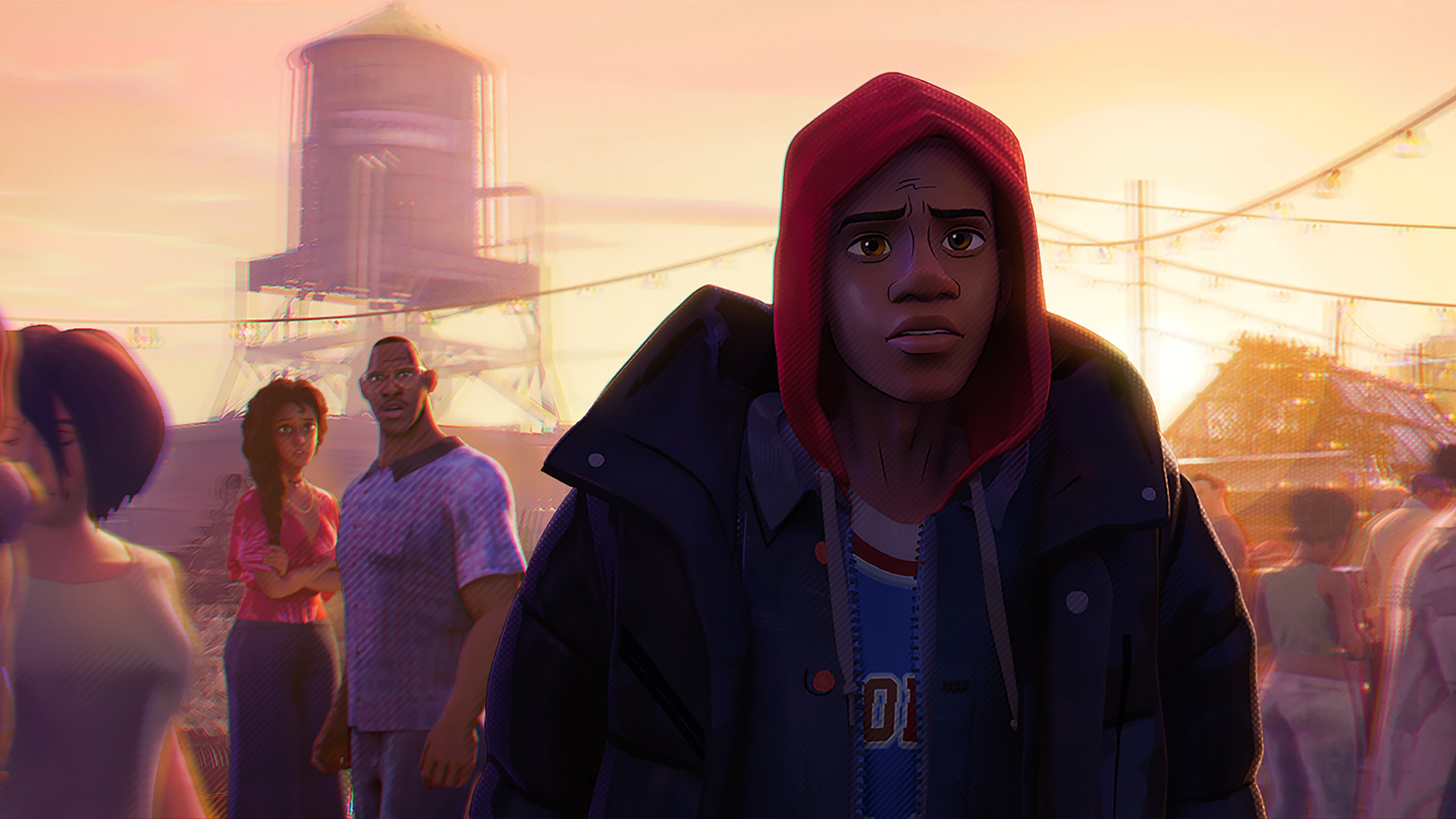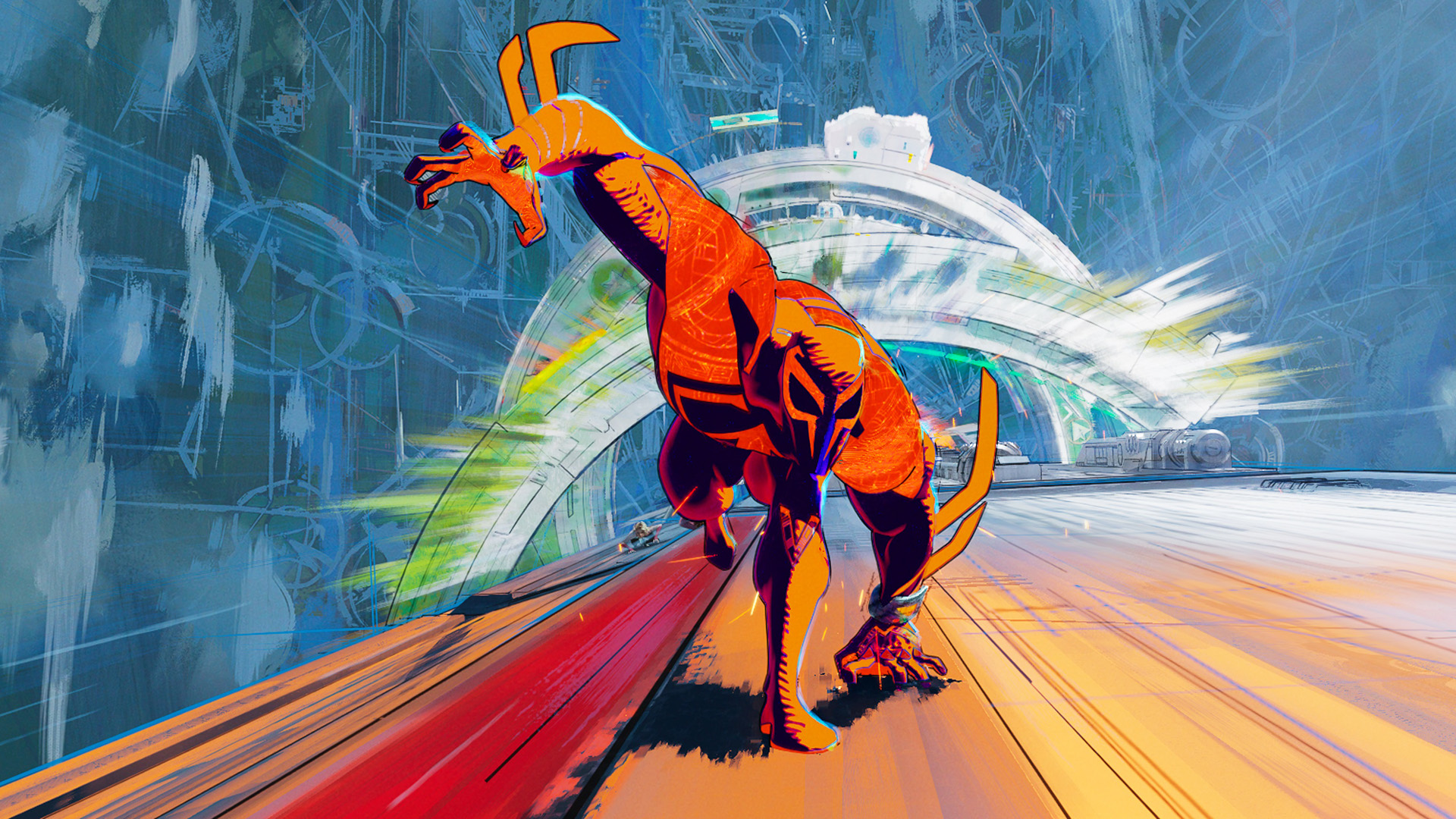Full spoilers follow for Spider-Man: Across the Spider-Verse. Proceed at your own risk.
After a four and a half year wait, Spider-Man: Across the Spider-Verse has majestically swung into theaters. And yes, there's a fair amount to unpack from its stunning, albeit abrupt ending.
Before we dive into the latest Spider-Man movie's explosive conclusion, whether there are any post-credits scenes worth sticking around for, and how it sets up forthcoming sequel Spider-Man: Beyond the Spider-Verse, you'll need to read our Across the Spider-Verse review to see if it's worth watching (spoilers: it is). Oh, and then you'll actually need to book a trip to your local theater to take in one of the best superhero movies of all-time.
Oh, you've done all of that? Great! Let's discuss Across the Spider-Verse's biggest talking points.
Spider-Man: Across the Spider-Verse ending explained: where does Miles end up?

Answer: Earth-42, i.e. another parallel universe.
To explain why Miles (Shameik Moore) doesn't travel back to his own reality – Earth-1610 – after he uses the Spider Society's Matrix-style teleportation machine, we have to go back to one of our first encounters with The Spot (Jason Schwartzman).
As Across the Spider-Verse's chief villain reveals, Wilson Fisk's Super Collider – a glorified particle accelerator – which The Spot, who was then just an ordinary scientist called Jonathan Ohnn, helped to build. During one particular test, the Super Collider brought a genetically engineered spider into Miles' universe. The reality it traveled from? Yep, Earth-42.
It's this superpowered bug that bites Miles in Spider-Man: Into the Spider-Verse, thus giving him his powers.
But there's a problem. The Spider Society's teleportation device sends its users to the universe where its spider-based DNA originated. As Miles was bitten by an Earth-42-dwelling arachnid, he's sent to that dimension instead of his own, meaning he's trapped in a universe he doesn't recognize (and proving that your fan theories were, in fact, way off base).
He'll also be unable to save his dad from being killed in just two days time – as Miguel O'Hara/Spider-Man 2099 (Oscar Isaac) tells Miles during one of their heated discussions, the death of Miles' father is a "canon event", a fixed point in time that can't be changed. If canon events are tampered with, they can lead to the breakdown of reality, and destroy the Spider-Verse as we know it.
What Spider-Man 2099 doesn't know, however, is that the now-incredibly powerful Spot has the ability to render canon events null and void, as he possesses the capacity to destroy universes singlehandedly, including Earth-1610. Why target the universe he hails from? Because Miles inadvertently ruined Ohnn's life when the destroyed the Super Collider in Into the Spider-Verse, which turned Ohnn into The Spot. Now, he wants to exact revenge on Miles, and that means destroying everyone and everything Miles holds dear.
Spider-Man: Across the Spider-Verse ending explained: who is the new Prowler? And how is Uncle Aaron alive?

Answer(s): that's another Miles Morales and Earth-42's version of Aaron Davis.
Viewers won't need reminding that Miles' Uncle Aaron (Mahershala Ali), who masqueraded as Earth-1610's version of the villainous Prowler, died in Into the Spider-Verse. He was shot by Wilson Fisk for not killing Miles.
On Earth-42, however, Uncle Aaron is still alive, meaning he's able to meet the Miles we know – and inevitably take him prisoner when he realizes this Miles isn't the one he looks after in this universe.
Even worse, uncle Aaron is working for a different kind of Prowler on Earth-42. Initially, it seems that he's adopted the superhero pseudonym here, just as he does on Earth-1610. However, Across the Spider-Verse pulls a fast one on us, eventually revealing that it's Earth-42's Miles Morales – complete with braids – who is the metal-clawed antagonist.
He's not the only supervillain who's seemingly got a strangehold on Earth-42, too. As Miles was bitten by this universe's radioactive spider, Earth-42 doesn't have a Spider-Man to protect it from those with questionable/dark morals wanting to take advantage of such a situation. Before Earth-42's Miles is revealed to be this dimension's Prowler, we hear a brief message from a news anchor on TV mention the Sinister Six, a collection of some of Spider-Man's most notorious villains, who seem to be the rulers of Earth-42. Our Miles – who, without one of Spider-Man 2099's multiverse-traversing devices, is starting to glitch out as his molecules break down in this alternate reality – certainly has his work cut out here...
Spider-Man: Across the Spider-Verse ending explained: who is in Gwen's Spider-Force?

Answer: all of our favorite Spider-People. Well, the ones who want to rescue Miles, anyway.
After she's kicked out of the Spider Society for standing with Miles, and after she reconciles with her father in her universe (Earth-65), Spider-Gwen (Hailee Steinfeld) travels to Earth-1610 – using Spider-Punk's multiverse device, which he gifts to her – to aid Miles in his attempts to save his father and stop The Spot.
When Gwen realizes Miles has traveled to the wrong dimension, though, she embarks on a new quest to save her friend (and potential love interest, don't forget). Using Spider-Punk's interdimensional wristwatch, she journeys to Peter B Parker's (Jake Johnson) universe (Earth-616) to seek his help to rescue Miles. And, as Miles' former mentor, who is Peter to resist?
Gwen doesn't stop there, though. As one of Across the Spider-Verse's final scenes shows, she's assembled her own Spider Society – or Spider-Force, if you will. Among the group are Hobie Brown/Spider-Punk (Daniel Kaluuya), Pavitr Prabhaker/Spider-Man India (Karan Soni), and Margo Kess/Spider-Byte (Amandla Stenberg), who warmed up to Miles as the movie's plot progressed.
Even more crowd-pleasing are the returns of a trio of Into the Spider-Verse characters: Peni Parker (Kimiko Glenn), Spider-Ham, and Spider-Man Noir, who also answered Gwen's call to arms to aid their friend in his time of need. Peni actually makes a brief cameo in Across the Spider-Verse – she's another Spider Society defector – but the other two weren't expected to appear here as voice actors Jon Mulaney and Nicolas Cage weren't asked to return. Delightfully, though, they do so, albeit in silent roles.
Of course, we know Miles has the capability of escaping his captors – we see him begin to charge up his Venom Strike ability before the movie cuts to black – but Gwen and company don't know that he's plotting his own jailbreak. Either way, here's hoping he's reunited with Gwen's Spider-Force sooner rather than later before they tackle the multiversal threat that The Spot poses in Beyond the Spider-Verse's climactic battle.
Spider-Man: Across the Spider-Verse ending explained: will the Spider Society return?

Answer: we don't know, but we would expect them to.
Unfortunately for Miles and Gwen's team of Spider-People, the Spider Society are likely still chasing them to stop Miles from saving his father. Oh, and from threatening the integrity of the Spider-Verse as they know it.
Across the Spider-Verse doesn't specify which Spider Society members we'll see again, but we suspect its leaders will show up in Beyond the Spider-Verse. That should include Miguel O'Hara/Spider-Man 2099 and Jessica Drew/Spider-Woman, who lead the supergroup, and potentially Andy Samberg's Ben Reilly/Scarlet Spider, whose fate is unknown after Spider-Gwen webbed him to a building o Earth-1610 as she tried to locate Miles.
As for the rest of the Spider Society? We'd be surprised if any other members show their faces in the threequel flick. There are a few other Spider-People who speak briefly in Across the Spider-Verse – namely, Patrick O'Hara/Web-Slinger (voiced by Taran Killam), the Spectacular Spider-Man's animated counterpart (Josh Keaton), and Insomniac Games' Spider-Man (we believe it's Yuri Lowenthal who reprises this role) – but we don't expect them to have big roles next time out.
Spider-Man: Across the Spider-Verse ending explained: are there any post-credits scenes?

Answer: no, there's not a single mid- or post-credits scene.
In a rare move for a comic book movie, Spider-Man: Across the Spider-Verse doesn't have any post-credits stingers. That's because it's the first installment in a two-part ending to Miles' animated big screen adventure. Adding in a mid- or post-credits scene, then, would detract from its cliffhanger-based conclusion.
Instead, viewers are simply treated to an end card that reads: "Miles Morales will return in... Spider-Man: Beyond the Spider-Verse". Not an impactful ending, sure, but one that begins to generate new excitement over the third and potentially final entry in this film series. In short: sit through the credits to appreciate the sheer number of people who worked on this amazing film, but don't stick around once they're over.
For more Spider-Man based coverage, learn more about how to watch the Spider-Man movies in order. Additionally, read our ranking of the best Spider-Man movies, find out why we don't need a live-action Miles Morales movie at this moment in time, or read our exclusive chat with the movie's directors about how Across the Spider-Verse found the freedom to swing into new animated frontiers.
from TechRadar - All the latest technology news https://ift.tt/kbBEu4N
No comments:
Post a Comment